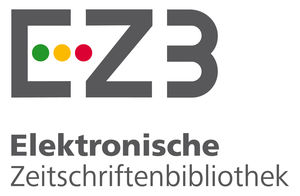A inserção da dimensão da linguagem na análise do problema didático
DOI:
https://doi.org/10.23925/1983-3156.2024v26i1p360-389Palavras-chave:
Dimensão da linguagem, Problema didático, Integral duplaResumo
O intuito deste artigo é inserir a dimensão da linguagem na análise do problema didático com o mesmo grau de relevância atribuído às dimensões epistemológica, ecológica e econômica ao estudar um objeto matemático. Delineamos um encontro com doze estudantes de Engenharias e de Licenciatura em Matemática de duas universidades públicas do interior da Bahia e propomos uma tarefa com o tema Integral Dupla, para o cálculo da medida do volume de uma Superfície Quádrica, o paraboloide hiperbólico. Como pressupostos teóricos tomamos como aporte a Teoria Antropológica do Didático (TAD) e a Semiótica Peirceana e o constructo elaborado pelos autores das quatro linguagens: contrafactual, dictarizada, em curso, em (dis)curso. Cinco dos estudantes resolveram a tarefa, três das Engenharias, que criaram uma questão no contexto de sua graduação, os outros dois, da Licenciatura em Matemática, se atentaram ao desenvolvimento de cálculos. Os resultados obtidos revelaram que os futuros engenheiros aplicaram de forma acentuada a linguagem contrafactual e em (dis)curso, enquanto, os da Licenciatura, a linguagem dictarizada e em curso; os dozes estudantes sentiram dificuldades na coautoria da elaboração, solução e análise das atividades, por não encontraremmodelos semelhantes nos livros didáticos e nas mídias. Inferimos que a dimensão da linguagem foi relevante para o desenvolvimento do raciocínio abdutivo e para a coautoria dos estudantes quanto a criação e solução dos enunciados de questões de Integral Dupla.
Referências
Almouloud, S. A. (2022) Fundamentos da didática da matemática. Editora UFPR.
Araújo, I. L. (2004). Do signo ao Discurso: introdução a filosofia da linguagem. Parábola Editorial.
Aristóteles. (2016). ÓRGANON: categorias, da interpretação, analíticos anteriores, analíticos posteriors, tópicos, refutações sofísticas/ Aristóteles; tradução, textos adicionais e notas de Edson Bini/ Edipro. (Série Clássicos Edipro)
Austin, J. L. (1990). Quando dizer é fazer. Tradução de Danilo Marcondes de Souza Filho. Artes Médicas.
Borba, M., & Penteado, M. G. (2007) Informática e Educação Matemática. Autêntica.
Brandão, A. K. D. C. (2021). Um Percurso de Estudo e Pesquisa para o ensino da Integral Dupla: significados e praxeologias mobilizados por estudantes de Engenharia e de licenciatura em Matemática. 2021. 439p.Tese (Doutorado em Educação Matemática). Programa de Estudos Pós-graduados em Educação Matemática. Pontifícia Universidade Católica de São Paulo.
Bosch, M., Fonseca, C., Gascón, J. (2004). Incompletitud de las organizaciones matemáticas locales en las instituciones escolares, Recherches en Didactique des Mathématiques, vol. 24, núms. 2-3, p. 205-250.
Brousseau, G. Fundamentos e Métodos da Didaáctica da Matemática. (1996). In: BRUN, J. Didática da Matemática. Tradução de: Maria José Figueiredo. (p. 35-113). Instituto Piaget.
Chevallard, Y. (1991) La Transposition Didactique: Du Savoir Savant au Savoir Ensigné. La pensée Sauvage.
Chevallard, Y. (2004). Vers une didactique de la codisciplinarité. Notes sur une nouvelle épistémologie scolaire. Journées de didactique comparée. http://yves.chevallard.free.fr/spip/spip/IMG/pdf/Vers_une_didactique_de_la_codisciplinarite.pdf.
Chevallard, Y. (2005). La Transposición Didáctica: del saber sabio al saber enseñado. Aique Grupo Editor.
Chevallard, Y. (2009b). La notion d’ingénierie didactique, un concept à refonder. Questionnement et éléments de réponse à partir de la TAD. 15e école d’été de didactique des mathématiques, p. 16-23
Chevallard, Y. (2012). Teaching mathematics in tomorrow’s society: a case for an oncoming counterparadigm. 12th International Congress on Mathematical Education. http://yves.chevallard.free.fr/spip/spip/IMG/pdf/RL_Chevallard.pdf.
Creswell, J. W. (2010). Projeto de Pesquisa: métodos qualitativo, quantitativo e misto. Tradução de Magda Lopes; Artmed.
Dante, L. R. (2000). Matemática: contextos & aplicações. Editora Ática.
Dante, L. R. (2008). Tudo é matemática. Ática.
Fontes, R. (2005). Análise de casca de alvenaria cerâmica armada: tipo paraboloide hiperbólico. 121p. Dissertação (Mestrado em Engenharia de Estruturas) – UFMG.
Gascón, J. (2011). Las tres dimensiones fundamentales de um problema didáctico: el caso da álgebra elemental. Relime. http://www.scielo.org.mx/scielo.php?script=sci_arttext&pid=S1665-24362011000200004.
Herrero, A. (1988). Semiótica y creatividad: La lógica abductiva. Palas Atenea.
Machado, N. J. (1993). Matemática e Língua Materna: análise de uma impregnação mútua. Cortez.
Machado, I. (2003). Escola de Semiótica: a experiência de Tartu - Moscou para o estudo da cultura. Ateliê Editorial.
Paiva, M. (1995). Matemática. Moderna.
Peirce, C. S. (2005). Semiótica. Tradução de: José Teixeira Coelho Neto. Perspectiva (Estudos; 46/ dirigida por J. Guinsburg)
Santaella, L. (2009). O que é semiótica. Brasiliense.
Silveira, M. R. A. A. (2015). Matemática, discurso e linguagens: contribuições para a educação matemática. Editora Livraria da Física – (coleção contextos da ciência)
Vergani, T. (2009). A criatividade como destino: transdisciplinaridade, cultura e educação. Orgs. Carlos A. Farias, Iran Abreu Mendes, Maria da Conceição de Almeida. Tradução de Edgard de Assis Carvalho. Editora Livraria da Física.
Verret, M. (1975). Le temps des études. Honoré Champion.
Downloads
Publicado
Como Citar
Edição
Seção
Licença

Este trabalho está licenciado sob uma licença Creative Commons Attribution-NonCommercial-NoDerivatives 4.0 International License.
Autores que publicam nesta revista concordam com os seguintes termos:- Autores mantém os direitos autorais e concedem à revista o direito de primeira publicação, com o trabalho simultaneamente licenciado sob a Licença Creative Commons Attribution que permite o compartilhamento do trabalho com reconhecimento da autoria e publicação inicial nesta revista.
- Autores têm autorização para assumir contratos adicionais separadamente, para distribuição não-exclusiva da versão do trabalho publicada nesta revista (ex.: publicar em repositório institucional ou como capítulo de livro), com reconhecimento de autoria e publicação inicial nesta revista.
- Autores têm permissão e são estimulados a publicar e distribuir seu trabalho online (ex.: em repositórios institucionais ou na sua página pessoal) a qualquer ponto antes ou durante o processo editorial, já que isso pode gerar alterações produtivas, bem como aumentar o impacto e a citação do trabalho publicado (Veja O Efeito do Acesso Livre).













